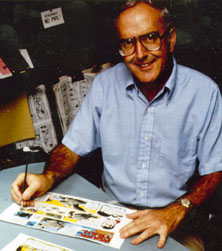
A cartoonist is a visual artist who specializes in drawing cartoons or comics. Cartoonists include the artists who handle all aspects of the work and those who contribute only part of the production. Cartoonists may work in many formats, such as booklets, comic strips, comic books, editorial cartoons, graphic novels, manuals, gag cartoons, illustrations, storyboards, posters, shirts, books, advertisements, greeting cards, magazines, newspapers, and video game packaging.

Dondi is a daily comic strip about a large-eyed war orphan of the same name. Created by Gus Edson and Irwin Hasen, it ran in more than 100 newspapers for three decades.

Durban is the third most populous city in South Africa after Johannesburg and Cape Town and the largest city in the South African province of KwaZulu-Natal. Durban forms part of the eThekwini Metropolitan Municipality, which includes neighboring towns and has a population of about 3.44 million, making the combined municipality one of the biggest cities on the Indian Ocean coast of the African continent.

The Brodie helmet is a steel combat helmet designed and patented in London in 1915 by John Leopold Brodie. A modified form of it became the Helmet, Steel, Mark I in Britain and the M1917 Helmet in the U.S. Colloquially, it was called the shrapnel helmet, battle bowler, Tommy helmet, tin hat, and in the United States the doughboy helmet. It was also known as the dishpan hat, tin pan hat, washbasin, battle bowler, and Kelly helmet. The German Army called it the Salatschüssel. The term Brodie is often misused. It is correctly applied only to the original 1915 Brodie's Steel Helmet, War Office Pattern.
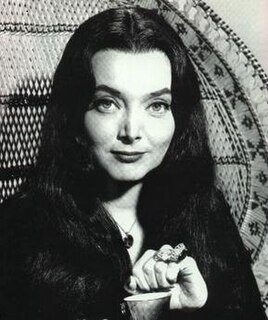
Morticia Addams is a fictional character from The Addams Family television and film series. Created by cartoonist Charles Addams, she was based on his first wife, Barbara Jean Day.
Fatima Meer was a South African writer, academic, screenwriter, and prominent anti-apartheid activist.

Islam in South Africa is a minority religion, practised by roughly 1.5-2.0% of the total population. It is also one of the fastest growing religion in South Africa. Islam in South Africa has grown in three phases. The first phase brought the earliest Muslims as part of the involuntary migration of slaves, political prisoners, and political exiles from Africa and Asia that lasted from about 1652 to the mid-1800s. The second phase was the arrival of indentured labourers from British India to work in the sugar-cane fields in Natal between 1860 and 1868, and again from 1874 to 1911. Of the approximately 176,000 Indians of all faiths who were transported to the Natal province, almost 7-10% of the first shipment were Muslims.
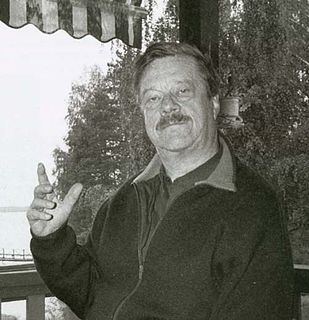
Kari Yrjänä Suomalainen was Finland's most famous political cartoonist, known as Kari. His cartoons appeared daily in Helsingin Sanomat from 1951 to 1991 and they became popular throughout the nation. While most of them comment on current politics, some are based on everyday life. Suomalainen received many awards for his work, including the National Cartoonist Society (US) award in 1959, Puupäähattu in 1984 and Pro Finlandia in 1989. He was also appointed honorary professor in 1977.
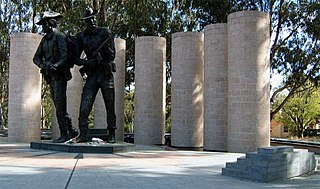
The Australian Army Memorial on Anzac Parade commemorates the service of Australian soldiers.

Victor J. Clapham (-1991) was a South African graphic artist, awarded the Bronze Wolf, the only distinction of the World Organization of the Scout Movement, awarded by the World Scout Committee for exceptional services to world Scouting, in 1976.
The Barnyard Battle is a Mickey Mouse short animated film first released on June 1, 1929, as part of the Mickey Mouse film series. It was the seventh Mickey Mouse short to be produced, the fourth of that year. As the title implies, it features a battle between an invading army of cats and an army of mice trying to defend their homes and farms.
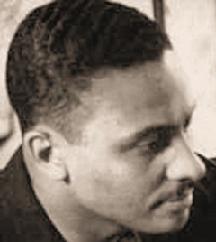
Elmer Simms Campbell was an American commercial artist best known as the cartoonist who signed his work, E. Simms Campbell. He was the first African-American cartoonist published in nationally-distributed, slick magazines. He was the creator of Esky, the familiar pop-eyed mascot of Esquire.

John Tinney McCutcheon was an American newspaper political cartoonist, war correspondent, combat artist, and author who won a Pulitzer Prize for his 1931 editorial cartoon, "A Wise Economist Asks a Question," and became known even before his death as the "Dean of American Cartoonists." The Purdue University graduate moved to Chicago, Illinois, in 1890 to work as an artist and occasional writer for the Chicago Morning News. His first front-page cartoon appeared in 1895 and his first published political cartoon was published during the U. S. presidential campaign of 1896. McCutcheon introduced human interest themes to newspaper cartoons in 1902 and joined the staff of the Chicago Tribune in 1903, remaining there until his retirement in 1946. McCutcheon's cartoons appeared on the front page of the Tribune for forty years.
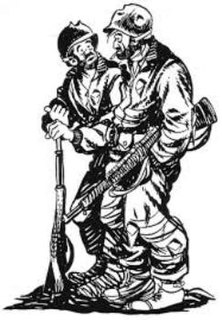
Willie and Joe are stock characters representing United States infantry soldiers during World War II. They were created and drawn by American cartoonist Bill Mauldin from 1940 to 1948, with occasional additional drawings until 1998. They were published in a gag cartoon format, first in the 45th Division News, then Stars and Stripes, and starting in 1944, a syndicated newspaper cartoon distributed by United Feature Syndicate.

The Memorable Order of Tin Hats (M.O.T.H.) was founded in 1927 by Charles Evenden as a brotherhood of South African former front-line soldiers. The ideal is to help comrades in need, either financially or physically; and to remember all servicemen who have answered the Sunset Call, both in war and peacetime.
Perla Siedle Gibson was a South African soprano and artist who became internationally celebrated during the Second World War as the Lady in White, when she sang troopships in and out of Durban harbour.

Mabel Palmer (1876–1958) also known as Mabel Atkinson in her first career, was a British-born, suffragist, journalist and lecturer. After her marriage, she began a second career as a South African educator and academic, using her married name. One of her most noted accomplishments came after her retirement from teaching, when she spearheaded a movement to provide university education for non-white students. After providing free courses in her home for a decade, she became director of the segregated courses offered by the Natal University College, serving from 1945 to 1955. After her second retirement, Palmer continued publishing until her death in 1958.
The following is a timeline of the history of the city of Durban in the eThekwini Metropolitan Municipality, KwaZulu-Natal province, South Africa.
The following is a timeline of the history of Pietermaritzburg. It is part of the Msunduzi Local Municipality in the Umgungundlovu District Municipality, KwaZulu-Natal province, South Africa.
Sir John Robinson, born in England, was a journalist and politician. He was the first prime minister of Natal.















